If you are in need for a quick Mothers Day gift, here is a simple project to give your Mother, and other significant women in your life, a handmade gift from the heart. If you need to pop it into the mail, this bookmark can be easily added to your handmade greeting card. Your Mom will love you for it!
Materials & Tools
- Cereal box cardboard
- Gesso
- Acrylic Paints
- Paint brushes
- Found objects and foam stamps
- Cutting mat and craft knife
- Rubber stamps to add features
- StazOn ink – Jet Black
- Metallic pen
- Spray varnish
Instructions
1. Cut our your sheet of cardboard
2. Add a layer of gesso and use a skewer to draw shapes or words into the wet gesso. Leave to dry.
3. Choose acrylic paints in two colour and splash around some paint onto the gesso’d cardboard
4. Use your found objects and foam stamps to add interesting shapes to your background. Apply the paint with a paintbrush and don’t worry about mixing colour – this all adds interest.
5. Cut into shapes; you can use this background to create many different items:
- Artist Trading Cards (ATCs) – 2 1/2″ x 3 1/2″
- Postcards – 4″ x 6″
- Bookmarks – 1 1/4″ x 5 1/2″
5. Stamp onto your chosen item. I like using black ink so that the coloured background isn’t over-shadowed by the images. Here I have used the Wildflower set by Darkroom Door. Edge with gold pen and seal with spray varnish.
Happy creating!
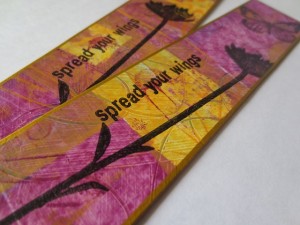
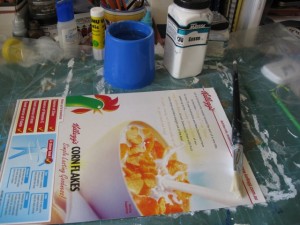
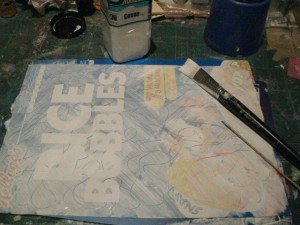
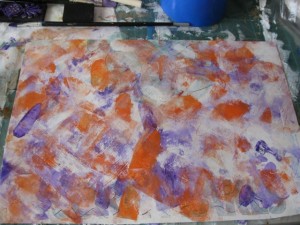
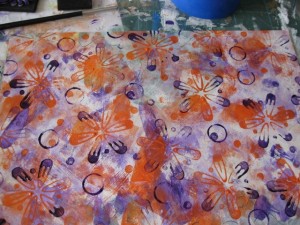
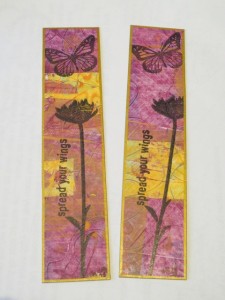
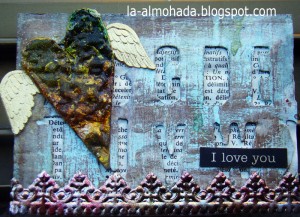
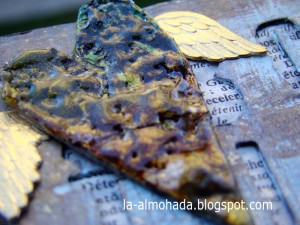
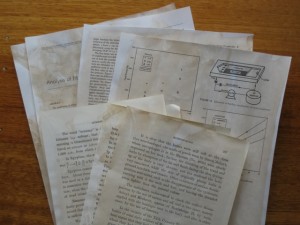
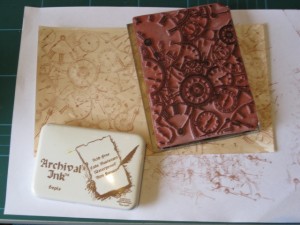
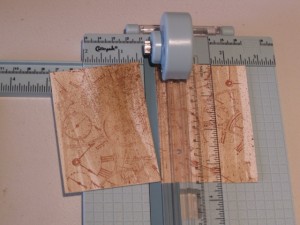
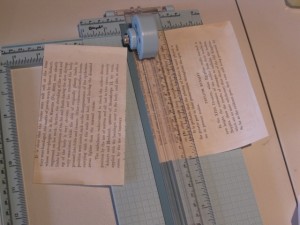
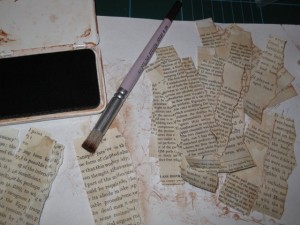
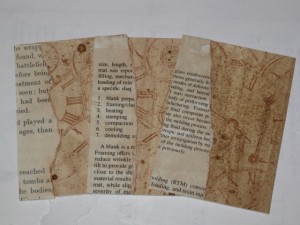
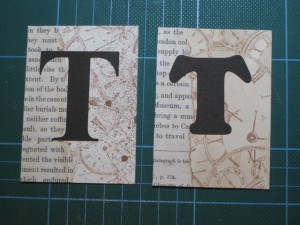
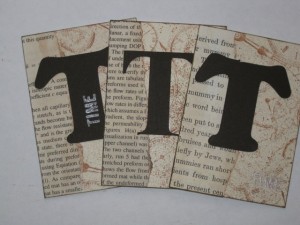
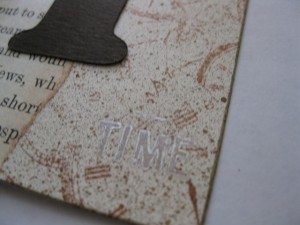
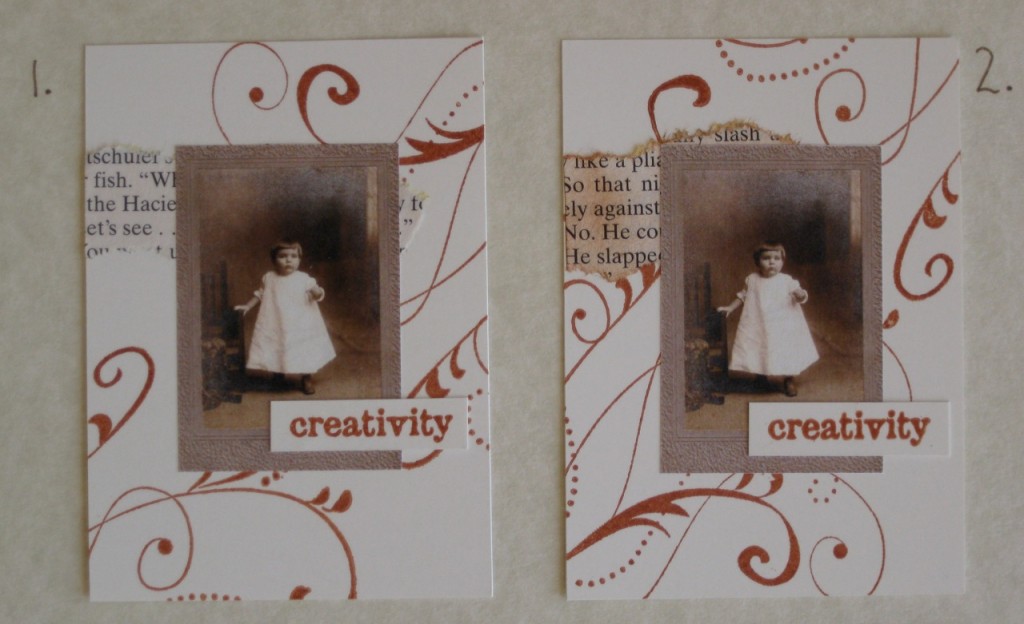
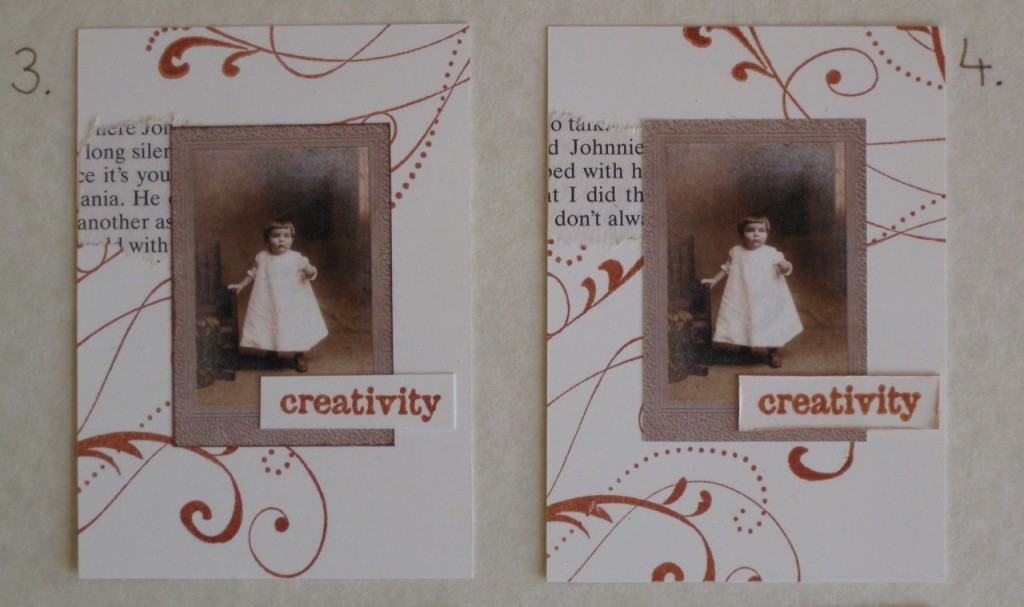
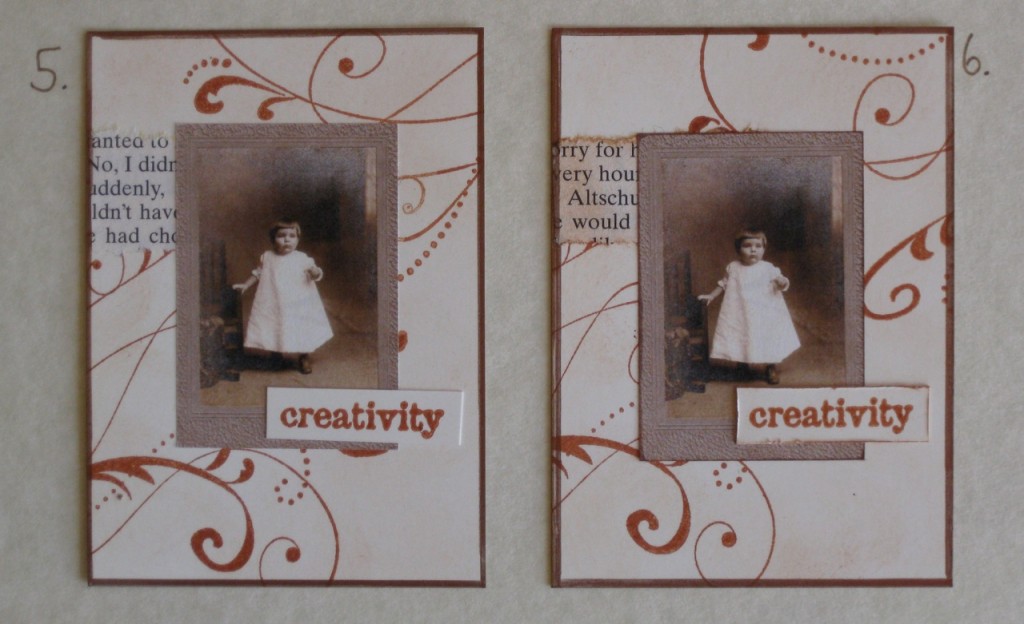



Recent Comments